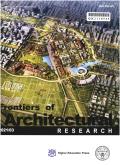基于视觉体验的情感认知试点研究:奥里奥-日比基诺地区路边建筑案例研究
IF 3.6
1区 艺术学
0 ARCHITECTURE
引用次数: 0
摘要
这项研究的目的是探索建筑和空间设计如何影响我们的舒适度。本研究探讨了视觉环境与情绪反应之间的联系。我们的假设是,人们的情绪会受到他们所看到的周围建筑、空间和家具的影响。每种性格类型的人都可能对周围环境产生独特的情绪反应。这项研究有三个主要目标:分析建筑环境、评估心理健康和进行神经科学分析。建筑环境分析分为两组:建筑设计分析和街景设计分析。心理健康分析确定了三个关键因素。神经科学分析表明,矩形形状与线性装饰和平静的色彩相结合,创造出最舒适的建筑设计。最舒适的街道景观包括大量具有遮阳效果的绿色植物。总之,这项研究证实,建筑会影响我们的情绪。促使我们感到舒适的因素会长期储存在我们的身心中。我们的情绪和情感状态会受到周围环境的影响。问卷调查和实验结果都支持这些结论。本文章由计算机程序翻译,如有差异,请以英文原文为准。
Pilot study of the emotion cognition based on visual experience: A case study of roadside buildings in the Orio-Hibikino area
The purpose of this research is to explore how the design of buildings and spaces affects our comfort. The study examines how our visual surroundings and emotional responses are connected. The hypothesis is that people's emotions are influenced by what they see in the buildings, spaces, and furniture around them. Each personality type may have a unique emotional response to their surroundings. The study has three main goals: to analyze the built environment, to assess psychological well-being, and to conduct neuroscience analysis. The built environment analysis is divided into two groups: architecture design analysis and street view design analysis. The psychological well-being analysis identifies three key factors. The neuroscience analysis shows that rectangular shapes combined with linear ornamentation and calming colors create the most comforting building design. The most comfortable street view includes an abundance of greenery with sun-shading effects. In conclusion, the study confirms that architecture affects our emotions. The factors that contribute to our comfort are stored in our mind and body over time. Our mood and emotional state are influenced by what we see in our surroundings. The questionnaire and experiment results support these conclusions.
求助全文
通过发布文献求助,成功后即可免费获取论文全文。
去求助
来源期刊

Frontiers of Architectural Research
ARCHITECTURE-
CiteScore
6.20
自引率
2.90%
发文量
430
审稿时长
30 weeks
期刊介绍:
Frontiers of Architectural Research is an international journal that publishes original research papers, review articles, and case studies to promote rapid communication and exchange among scholars, architects, and engineers. This journal introduces and reviews significant and pioneering achievements in the field of architecture research. Subject areas include the primary branches of architecture, such as architectural design and theory, architectural science and technology, urban planning, landscaping architecture, existing building renovation, and architectural heritage conservation. The journal encourages studies based on a rigorous scientific approach and state-of-the-art technology. All published papers reflect original research works and basic theories, models, computing, and design in architecture. High-quality papers addressing the social aspects of architecture are also welcome. This journal is strictly peer-reviewed and accepts only original manuscripts submitted in English.
 求助内容:
求助内容: 应助结果提醒方式:
应助结果提醒方式:


